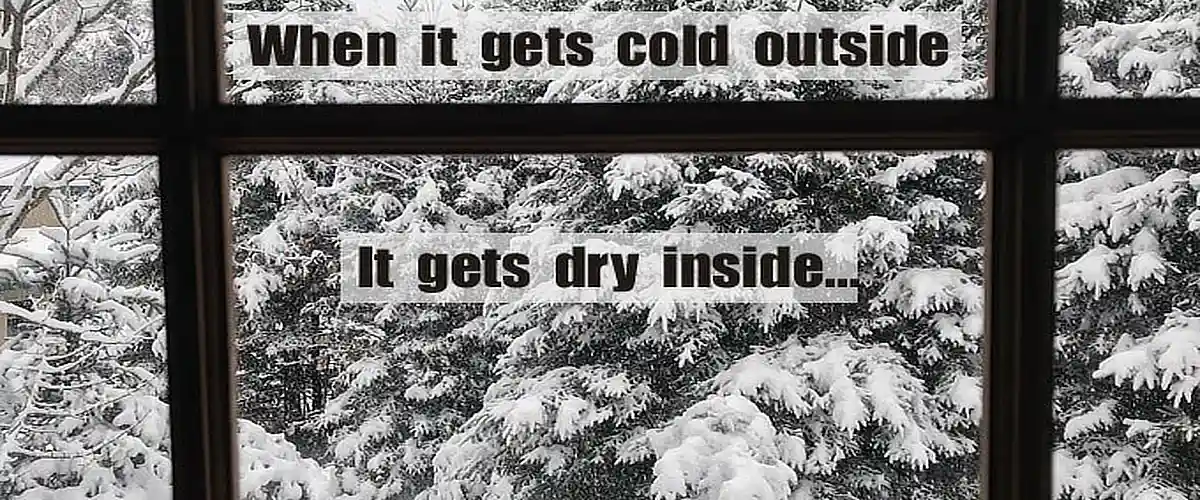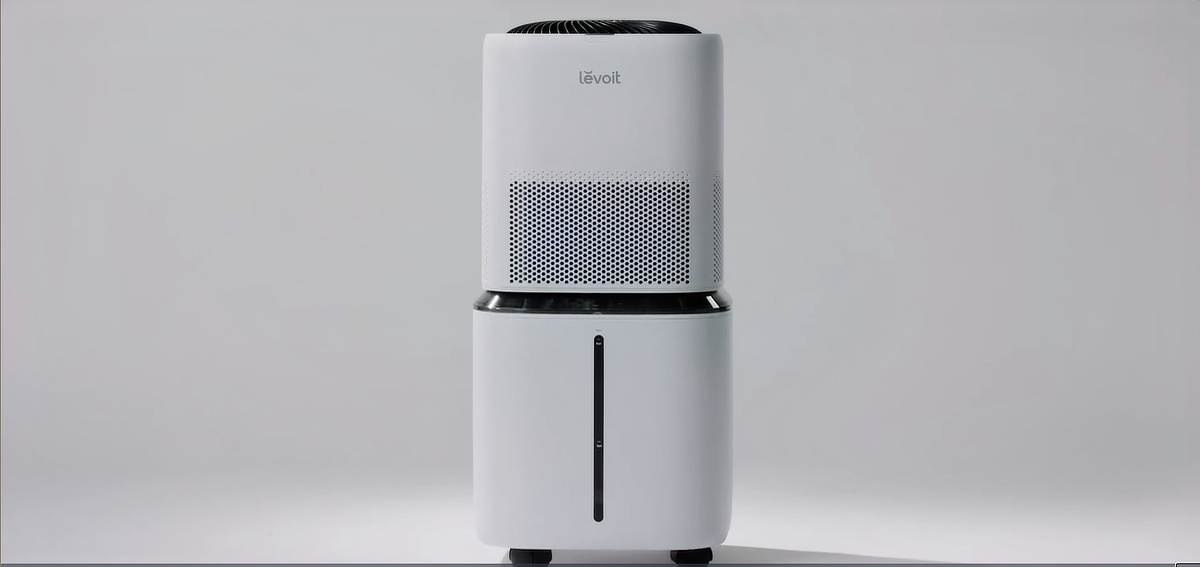Indoor Humidity During Winter – What Should It Be?

A common question is, “What should the house humidity be in the winter?” That’s a good question…
The humidity in the home during winter sure does get dry! The colder it gets outside, the drier the air inside a heated house.
Do you know what an ideal indoor humidity level is during the winter? I will tell you my preferred indoor winter humidity and how I adjust it based on the outside temperature if it gets cold outside.
If purchasing through my links, I may earn commission (no extra cost).
Affiliate Disclosure
First, to solve that problem, get a humidifier. I have come to like the Levoit products. This is an excellent humidifier for a large area. I highly recommend it.
Through their App, I can control and monitor all of my Levoit products (including my Levoit Air Purifiers).

BEST INDOOR HUMIDITY LEVEL DURING WINTER
My generally preferred indoor humidity during winter is 40%
(HOWEVER, See Update below for freezing weather)
Why 40%? If I set the humidifier much higher, the edges of my window panes become excessively damp and even frosty when the outdoor temperatures get cold.
My windows are dual-pane Anderson ‘high performance,’ but they will still develop moisture around the edges when frigid outside. A 35 – 40% indoor humidity level is a good balance.
Specifically, I adhere to the following guidelines for indoor humidity settings versus outdoor temperature. It has worked to minimize moisture on the windows while providing decent humidity indoors during winter.
Best Winter Indoor Humidity Level
What humidity should I set my humidifier to? Well, that depends a lot on the outdoor temperature.
Here are guidelines for setting your winter indoor humidity level based on outdoor temperature. This is meant to minimize moisture on your windows.
Several years ago, my dad revealed this to me (his winter indoor humidity guideline secret). I started following it, and it worked well at my place. So, I’m sharing it with the world :)
Outdoor Temp. 20 – 40 degrees-F > Indoor Humidity 40%
Outdoor Temp. 10 – 20 degrees-F > Indoor Humidity 35%
Outdoor Temp. 0 – 10 degrees-F > Indoor Humidity 30%
Outdoor Temp. -10 – 0 degrees-F > Indoor Humidity 25%
Why Indoor Humidity Gets Dry In The Winter
It’s just the way science works. When it is cold outside, and the heating system in your home warms the air, the indoor humidity level drops. It gets drier.
When cold outdoor air is supplied and heated in a building, the relative humidity of the air indoors decreases.
And often, it gets A LOT DRIER! To the point of being uncomfortable!
Here’s an example of what happens:
If the outdoor temperature during the winter is 20 degrees (F) and outdoor humidity is 60%, and when the air is heated to an indoor temperature of 70 degrees (F), the indoor humidity level will drop to just 6%!
Your real-world experience (from the example above) may result in slightly higher humidity levels in the home due to other factors.
– taking a shower generates humidity
– boiling water, cooking
– breathing
– type of heating system
However, the humidity level will still be low and dry! You begin to notice when the indoor humidity level drops below 40%.
But first, here’s what you don’t notice and something that you should pay attention to:
You begin to become dehydrated! Our natural perspiration quickly dries out. You probably won’t even feel thirsty at first. However, please keep this in mind. It could lead to issues. Stay hydrated! Here’s an article I wrote about it:
[ Read: We Don’t Drink Enough Water During The Winter ]
DRY SKIN From Low Humidity
That’s the first thing you notice during winter. For me, it’s my hands. They dry out first. But it’s everything. All your skin dries out.
TIP: I’ve been using this stuff for years, mainly on my hands. It’s great.
DRY NOSE From Low Humidity
The mucus membranes dry out, which can be uncomfortable and annoying. In the worst case, you might even get a bloody nose.
CHAPPED LIPS From Low Humidity
Dry, chapped lips. It happens during winter, inside or outdoors. We have plenty of Chapstick around the house, in the truck, wherever…
ITCHY SKIN From Low Humidity
Yep, dry skin leads to itchy skin…
DRY EYES From Low Humidity
Wear contact lenses? Say hello to lots of re-wetting drops. I used to wear contacts all the time. Years ago, I switched over to wearing glasses mostly. My eyes feel better that way. However, it can be a nuisance during winter when they fog up for various reasons, like going indoors after being outdoors, going out snowmobiling with my helmet on (I usually wear contacts for that scenario) or putting on goggles during a snowstorm for whatever reason I might have to be outside.
STATIC ELECTRICITY From Low Humidity
ZAP! Handle a fleece blanket, and you’re gonna get zapped! It’s one of those relatable experiences that always catches you off guard. Another effect is your hair standing out. Or you go to pick up your pet, and he yelps as he gets shocked (followed by the nasty eye like you hurt him on purpose)! Oh, when you go to open that door and grab the door handle… ZAP!
CONCLUSION
A whole-house or large-room humidifier placed in the main living area of your home will result in better health and well-being during the winter. It will help alleviate the indoor dry weather effects listed above.
[ Read:
Carbon Monoxide Poisoning During Winter
